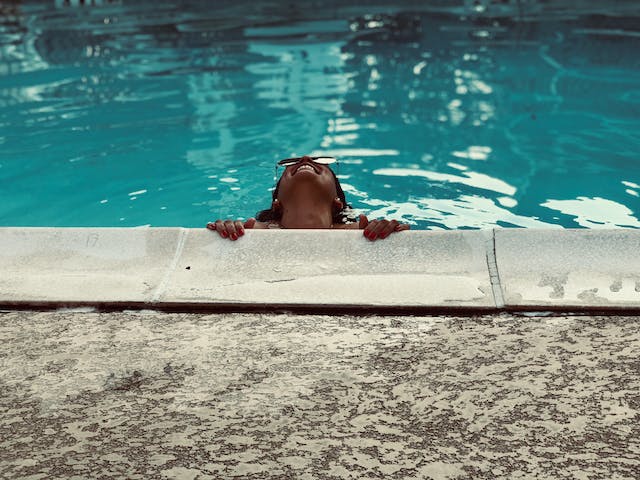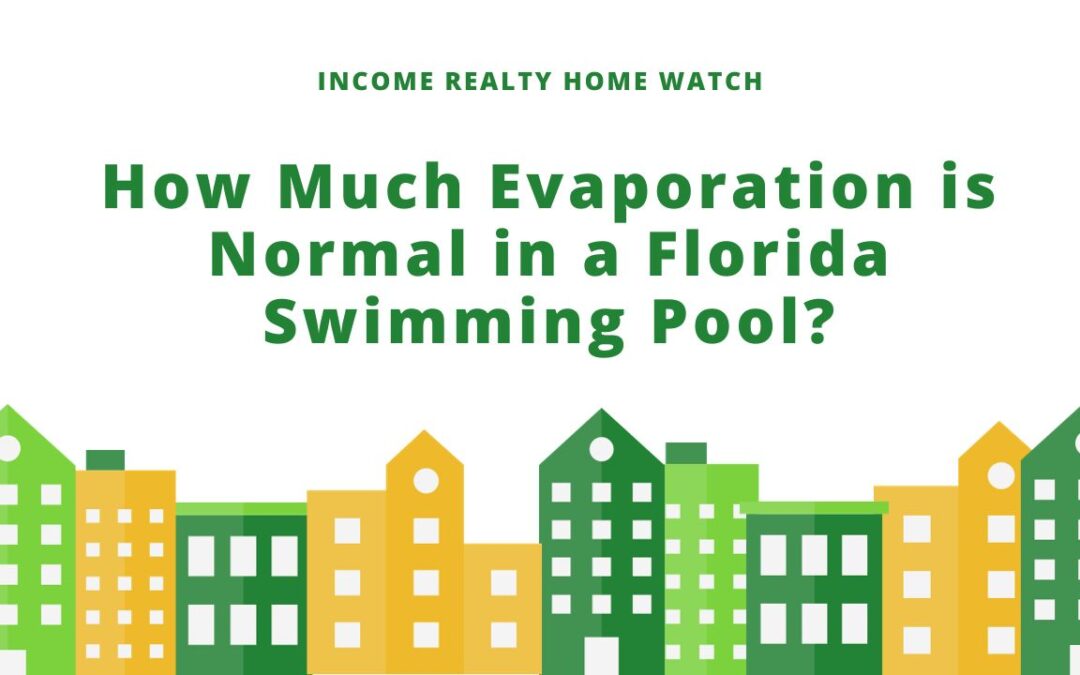In the tropical paradise of Florida, where sunshine and warm weather beckon residents to cool off in the refreshing embrace of swimming pools, a common concern arises among both tenants and landlords: “How much evaporation is normal?”
Understanding the delicate balance between the natural loss of pool water and potential signs of leaks is crucial for maintaining not just the pool’s integrity but also the satisfaction of those who enjoy its waters. Whether you’re a snowbird or a permanent resident in Florida, you need to know.
Join us on a journey through the nuances of pool water evaporation in the Sunshine State, as we explore the factors, conditions, and strategies that landlords and tenants alike can employ to ensure optimal pool care in the face of Florida’s unique climate.
The Uncovered vs. Covered Dilemma
The decision to cover or leave a pool uncovered in Florida is a crucial aspect of effective water management. Uncovering a pool exposes it to the elements, making it susceptible to the natural process of evaporation, particularly in the state’s warm and sunny climate. This is why having a dehumidifier in your home is a good idea, but it can hurt your pool.
An uncovered pool, on average, loses about a quarter-inch of water each day. This routine water loss can accumulate, posing not only an inconvenience for tenants but also potentially increasing water and maintenance costs for landlords.
On the flip side, the introduction of a pool cover introduces a transformative layer of protection. Beyond merely reducing daily water loss, a cover acts as a shield against the intense Florida sun and heat, curbing not only water evaporation but also the dissipation of essential pool chemicals.

When used diligently, especially during the night, a cover becomes a cost-effective tool that significantly mitigates the impact of evaporation on water levels.
Moreover, the benefits extend beyond water conservation. Pool covers act as insulators, preventing heat loss during cooler evenings. This not only contributes to maintaining a comfortable water temperature but also reduces the need for excessive heating, thereby lowering utility costs for both tenants and landlords.
Factors Influencing Evaporation
To provide comprehensive guidance to tenants, landlords must unravel the intricacies of factors influencing pool water evaporation. In addition to sun and air temperature, humidity levels, and wind velocity, landlords can educate tenants about pool-specific variables like water circulation and chemical balance.
By fostering an understanding of these elements, landlords empower tenants to make informed decisions about pool care based on the specific characteristics of their property, ensuring optimal water conservation practices.
Weathering the Storm
Florida’s vulnerability to tropical storms and hurricanes demands a proactive approach from landlords. Beyond recommending the tight covering of pools, landlords can advise tenants on additional protective measures, such as installing temporary windbreaks and securing loose poolside items.
This comprehensive approach not only safeguards the pool from excessive evaporation and debris but also mitigates potential hazards posed by flying objects during storms, demonstrating a commitment to tenant safety.
Wind’s Role in Water Loss
Wind emerges as a significant influencer of evaporation rates, providing landlords with an opportunity to guide tenants on optimizing pool maintenance routines further. Landlords can delve into the concept of windbreaks, suggesting strategic landscaping or structures that minimize the impact of wind on water loss.

By incorporating such measures into pool care guidelines, landlords contribute not only to water conservation but also to the aesthetic appeal of the pool area. Snowbirds should also consider using DampRids in the off-season because of Florida’s climate.
Sunlight’s Impact on Evaporation
A deep dive into the impact of intense sunlight on water levels and chemical evaporation allows landlords to offer targeted advice. Beyond recommending stabilizers to prevent excessive chlorine loss, landlords can explore the benefits of UV-resistant pool covers.
These covers not only shield the pool from intense sunlight but also prolong the lifespan of pool chemicals, presenting a comprehensive solution for landlords aiming to optimize pool care in the Florida climate.
Managing Drought Conditions
In drought conditions, landlords play a crucial role in guiding tenants on responsible water usage. Beyond the financial implications of refilling pools, landlords can collaborate with tenants to implement water-saving measures, such as rainwater harvesting or utilizing pool backwash water for irrigation.
This holistic approach not only addresses immediate water conservation but also fosters a long-term commitment to sustainable practices among tenants.
Windbreaks and Water Conservation
Landlords should delve into the nuanced relationship between windbreaks and water conservation. Beyond high fences or hedges, landlords can explore the benefits of installing strategic windbreak structures or utilizing existing architectural features.
Additionally, educating tenants on the importance of landscaping elements like shade trees can further mitigate water loss due to sunlight.
By incorporating these details into pool care guidelines, landlords contribute to a comprehensive understanding of water conservation, promoting both environmental responsibility and the efficient use of pool resources.
Energy-Efficient Pool Equipment
In the pursuit of sustainable pool maintenance, landlords can guide tenants towards modern, energy-efficient pool equipment. Upgrading to variable-speed pool pumps stands out as a pivotal step.

These pumps consume less energy compared to traditional single-speed counterparts, not only reducing utility costs for tenants but also contributing to a significant decrease in water evaporation.
The efficient circulation facilitated by these pumps ensures that water is optimally utilized, aligning with a broader commitment to resource conservation. Landlords can emphasize the long-term environmental and financial benefits of such upgrades, fostering a culture of responsible pool ownership among tenants.
Smart Water Management Systems
Advancements in technology offer landlords and tenants alike a powerful ally in the quest for water conservation—smart water management systems.
These sophisticated systems enable remote monitoring and control of pool water levels, empowering landlords to make real-time adjustments and optimize water usage. Automated features, such as adjusting water features based on weather conditions, further enhance efficiency.
By introducing tenants to these cutting-edge solutions, landlords not only enhance the overall sustainability of pool care but also position their properties at the forefront of modern, environmentally conscious living.
Educating tenants on the ease and benefits of integrating smart technology into their pool maintenance routines reinforces the property’s commitment to both convenience and responsible resource management.
Bottom Line
As we conclude our exploration into the intricacies of pool water evaporation in the Sunshine State, it is evident that a proactive approach to maintenance is key.
By embracing the knowledge shared in this guide—from deciphering evaporation rates to weathering storms and considering energy-efficient solutions—those responsible for pool care can ensure a harmonious balance between enjoyment and conservation.
For landlords seeking additional support in maintaining their properties, there are professional services available that specialize in property care and watchfulness. Consider exploring reputable home watch services, such as Income Realty Home Watch, which can offer tailored solutions to safeguard your investment.


Recent Comments